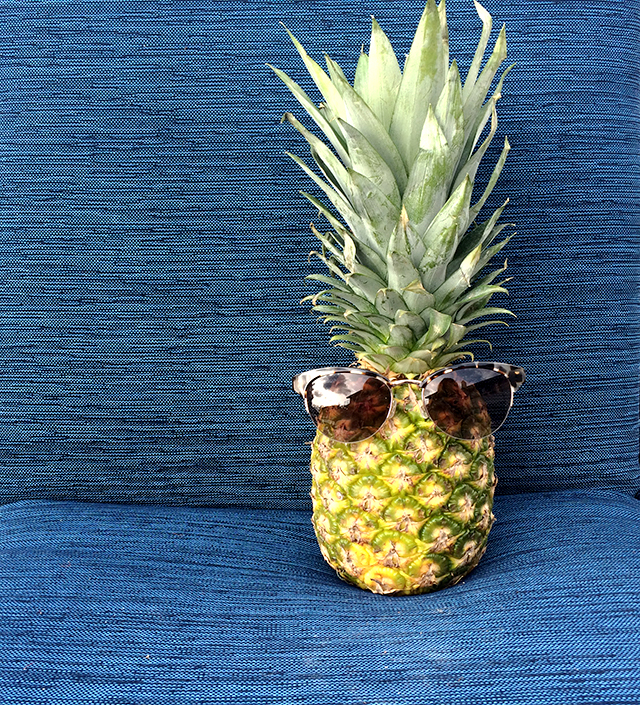Choosing the right pineapple can make all the difference in your culinary experience. Whether you're preparing a tropical fruit salad, making a delicious smoothie, or simply enjoying a juicy slice, knowing how to identify a ripe and flavorful pineapple is essential. Many people struggle with selecting a good pineapple, but with the right tips and tricks, you can confidently choose one that will satisfy your taste buds. This comprehensive guide will walk you through the key factors to consider when selecting a pineapple, ensuring that you get the best quality every time.
Pineapples are not only delicious but also packed with nutrients, making them a healthy addition to your diet. However, selecting a pineapple that is perfectly ripe can be challenging, especially for those who are unfamiliar with the fruit. Understanding the characteristics of a good pineapple, such as its aroma, color, and firmness, can help you make the right choice. By following the advice in this article, you'll gain the confidence to select a pineapple that meets your expectations and enhances your cooking or snacking experience.
With the increasing popularity of tropical fruits, knowing how to know if a pineapple is good has become more important than ever. Whether you're shopping at a local market or a large supermarket, the principles of selecting a high-quality pineapple remain the same. This guide will provide you with expert tips and practical advice to ensure that you pick the best pineapple every time, saving you from the disappointment of an underripe or overripe fruit.
Read also:Struggs 2 Func The Ultimate Guide To Mastering Lifes Challenges
How Can You Tell If a Pineapple Is Ripe?
One of the most common questions people ask is how can you tell if a pineapple is ripe? The ripeness of a pineapple can be determined by several factors, including its smell, color, and texture. A ripe pineapple should have a sweet, fragrant aroma at the base, which is one of the best indicators of its readiness. Additionally, the skin should have a golden-yellow hue, especially around the bottom third of the fruit, although some varieties may appear greener even when ripe. The pineapple should also feel firm but yield slightly to gentle pressure.
What Should You Look for When Buying a Pineapple?
When buying a pineapple, it's important to inspect it carefully to ensure that it meets the criteria for a good fruit. Start by checking the leaves at the crown. Healthy, green leaves are a sign of freshness, while brown or wilted leaves may indicate that the pineapple is past its prime. You should also examine the skin for blemishes or soft spots, which could indicate damage or overripeness. Finally, consider the weight of the pineapple—choose one that feels heavy for its size, as this often indicates juiciness.
How to Know If a Pineapple Is Good Based on Its Smell?
The smell of a pineapple is one of the most reliable indicators of its quality. To assess the aroma, turn the pineapple upside down and take a whiff near the base. A good pineapple should have a sweet, tropical fragrance, signaling that it is ripe and ready to eat. If the pineapple has no smell or emits a sour odor, it may not be at its best. Remember that the aroma should be pleasant and inviting, not overpowering or unpleasant.
Why Does the Color of a Pineapple Matter?
The color of a pineapple is another important factor to consider when determining its quality. While some varieties may remain green even when ripe, most pineapples develop a golden-yellow color on the bottom third of the fruit. This indicates that the sugars have developed fully, resulting in a sweeter taste. However, avoid pineapples that are completely green or have patches of brown, as these could be underripe or overripe, respectively. Keep in mind that the color alone may not always be a foolproof indicator, so it's best to combine it with other assessment methods.
How Do You Test the Firmness of a Pineapple?
Testing the firmness of a pineapple is a simple yet effective way to gauge its ripeness. Gently press the sides of the fruit with your fingers. A good pineapple should feel firm but yield slightly to pressure. If it feels too hard, it may not be ripe yet, while a pineapple that feels too soft or mushy could be overripe and past its peak. By combining this tactile test with other methods, such as checking the aroma and color, you can make a more informed decision when selecting a pineapple.
Can You Eat a Pineapple That Is Not Fully Ripe?
Many people wonder if they can eat a pineapple that is not fully ripe. While it is possible to eat an underripe pineapple, the taste and texture may not be as enjoyable. An unripe pineapple tends to be less sweet and more tart, with a firmer texture that can be difficult to cut and eat. If you find yourself with an unripe pineapple, you can try leaving it at room temperature for a day or two to allow it to ripen further. However, keep in mind that pineapples do not continue to ripen significantly after being harvested, so it's best to choose one that is already ripe when purchasing.
Read also:Lin Bergren The Inspiring Journey Of A Visionary Leader
What Happens If You Buy an Overripe Pineapple?
Buying an overripe pineapple can lead to disappointment, as the fruit may have lost its freshness and flavor. An overripe pineapple may appear too soft, with brown spots or a fermented smell. Eating such a pineapple can result in a less satisfying experience, with a mushy texture and a sour taste. To avoid this, always inspect the pineapple carefully before purchasing, paying attention to its aroma, color, and firmness. By following the tips in this guide, you can minimize the risk of selecting an overripe pineapple.
How to Know If a Pineapple Is Good: Final Tips
Now that you've learned how to know if a pineapple is good, here are some final tips to keep in mind when selecting one. First, trust your senses—use your nose, eyes, and hands to evaluate the pineapple's aroma, color, and texture. Second, consider the size and weight of the pineapple, as a larger, heavier fruit often indicates juiciness. Finally, don't be afraid to ask for assistance at the market or grocery store if you're unsure about your selection. With practice, you'll become an expert at choosing the perfect pineapple every time.
How Can You Store a Pineapple After Purchasing It?
Once you've purchased a pineapple, proper storage is key to maintaining its quality and extending its shelf life. If you plan to consume the pineapple within a day or two, you can leave it at room temperature to allow it to ripen further. However, if you want to store it for longer, place the pineapple in the refrigerator, ideally in the crisper drawer. This will help slow down the ripening process and preserve its freshness. Remember to consume the pineapple within a few days for the best flavor and texture.
Can You Freeze a Pineapple for Later Use?
Yes, you can freeze a pineapple for later use, but it's important to prepare it properly beforehand. Start by cutting the pineapple into slices, chunks, or cubes, depending on your preference. Then, place the pieces in an airtight container or freezer bag, removing as much air as possible to prevent freezer burn. Frozen pineapple can be stored for up to six months, making it a convenient option for preserving the fruit for future use. When ready to use, simply thaw the pineapple in the refrigerator or microwave, depending on your needs.
What Are Some Creative Ways to Use Pineapple?
Pineapple is a versatile fruit that can be used in a variety of dishes, both sweet and savory. Here are a few creative ideas to incorporate pineapple into your meals:
- Make a tropical fruit salad with pineapple, mango, and kiwi
- Grill pineapple slices and serve them as a dessert or topping for ice cream
- Use pineapple chunks in a stir-fry or curry for added sweetness and flavor
- Blend pineapple into a smoothie for a refreshing drink
- Add pineapple to pizza for a unique combination of sweet and savory
Conclusion: Mastering the Art of Pineapple Selection
Selecting a good pineapple requires attention to detail and a combination of sensory assessments. By understanding how to know if a pineapple is good through its aroma, color, and texture, you can make an informed choice that will enhance your culinary creations. Whether you're a seasoned chef or a home cook, mastering the art of pineapple selection will elevate your cooking experience and ensure that you enjoy the best quality fruit every time.
Table of Contents
- How Can You Tell If a Pineapple Is Ripe?
- What Should You Look for When Buying a Pineapple?
- How to Know If a Pineapple Is Good Based on Its Smell?
- Why Does the Color of a Pineapple Matter?
- How Do You Test the Firmness of a Pineapple?
- Can You Eat a Pineapple That Is Not Fully Ripe?
- What Happens If You Buy an Overripe Pineapple?
- How to Know If a Pineapple Is Good: Final Tips
- How Can You Store a Pineapple After Purchasing It?
- Can You Freeze a Pineapple for Later Use?


